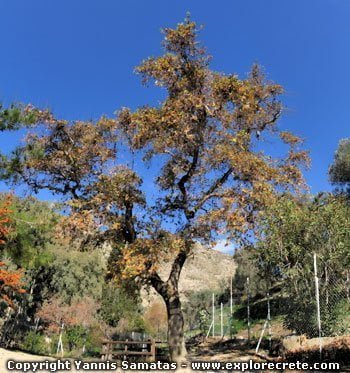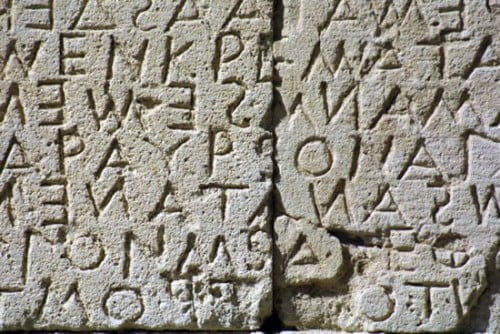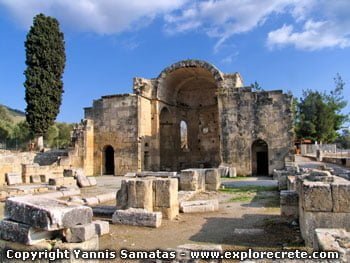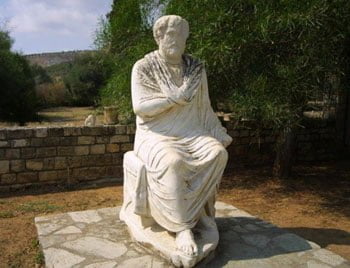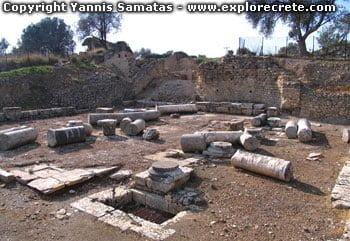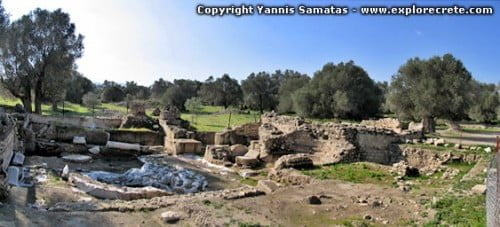Phaistos West Court, Shrine, Theater, Propylaion
The West Court
At the edge of the Northwest Court is the monumental stairway leading to the West Court of the Phaistos Palace.
The paved West Court you see today dates from the time of the first palace (2000 BC). Following the destruction of the first palace, the West Court was rebuilt as a court six metres higher than the last and covered with earth. Many archaeologists believe that this was where the famous bull-leaping took place.
Bull-leaping was a splendid ceremony forming part of ritual ceremonies with an athletic character, a particularly dangerous sport with acrobatic leaps over the bull while it ran around. We should note that bull-leaping had nothing to do with the modern gory bullfights of Spain. Bull-leaping never ended with the death of the bull, a fact which underlines the Minoans’ respect for nature and its sanctity.
The Tripartite Shrine in the West Court
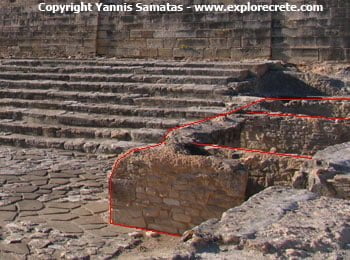
In the West Court is a small tripartite shrine, only the foundations of which remain. Do not forget that at Phaistos the palace has not been restored in the way that Evans restored Knossos.
This is a different approach, one which protects the monument from interventions based on incomplete data and arbitrary conjectures.
At the Tripartite Shrine you can easily distinguish a building with three interconnecting rooms, of which the central one is the largest and highest. There were benches along the walls for worshippers to place cult artefacts on, while there was also an altar.
The Theatre
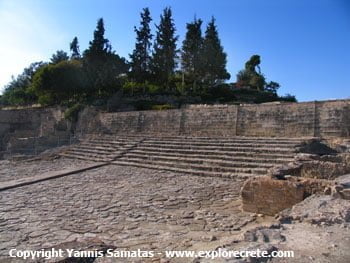
The West Court is bounded to the north by a high wall, still visible today, which also functioned as a support for the Northwest Court. At the foot of the wall were eight deep steps, an impressive 22 metres long. These formed the seats of a theatre.
It may be far-fetched to imagine a theatre as we think of it today, but this was certainly a gathering-place. The amphitheatrical layout meant that the whole audience had an exceptional view of the court where the various events took place.
In the West Court the Processional Causeway stands out once more above the pavement, leading us to believe that ceremonies were held here. We should not forget that the west wing of the Minoan palaces was considered a sacred space.
The “Kouloures”
On the west side of the court stand circular structures like a row of wells. These are the “kouloures” (rings) as they are called in the Cretan dialect, due to their circular shape. This is where the remains of the sacrifices and various ceremonies were deposited, as they could not be allowed to end up in a common dump. The kouloures are also known as “sacred depositories”.
The Propylon or Propylaion
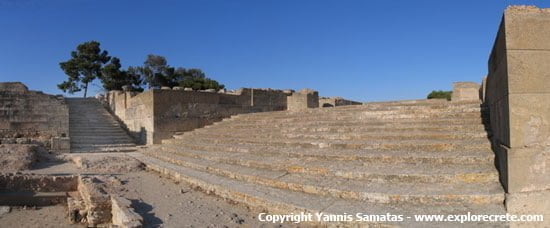
To go from the West to the Central Court or the other areas of the Palace, people had to pass through the Propylon or portico. This is a covered corridor with columns, a polythyron (pier-and-door partition) and a lightwell, accessed by a splendid 14-metre monumental staircase.
A detail of the staircase construction which still impresses visitors today is that the steps are slightly slanted to allow the rainwater to run off.
- 1 Northwest Court
- 2 Roman Hypostyle Building
- 3 Tripartite Shrine, West Court
- 4 West Court (Theatral Area)
- 5 Propylon to Central Court
- 6 West Magazines
- * Central Court
- 7 Temple of Rhea
- 8 East Court
- 9 Queen’s Apartment + King’s Megaron
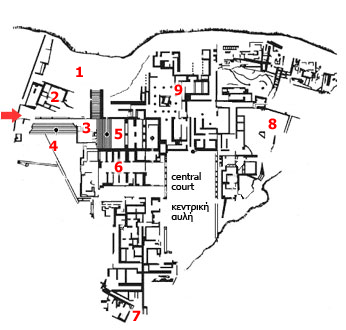
© explorecrete.com All Rights Reserved. Reproduction or copying without permission is prohibited.

